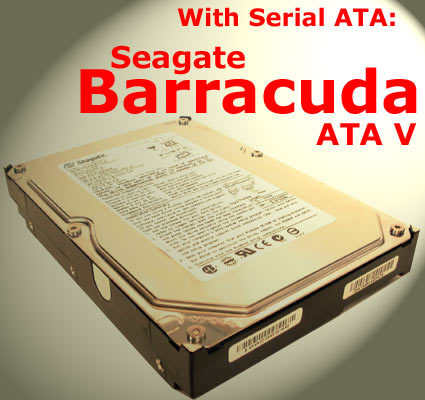Serial ATA Is Here: Seagate Barracuda ATA V and Five of the Latest Controllers Reviewed
Introduction
It was an awfully long wait. We were expecting them at the end of the summer, but it has dragged on through the winter. First Fujitsu sent us pre-production samples of their 2.5" Serial ATA laptop drive. Now, the first (desktop) drive has reached us - the Barracuda ATA V from Seagate.
Tests with pre-production models (from Western Digital, among others) soon took the wind out of the sails of any overly ambitious expectations we might have had about this new interface. The Serial ATA interface promises to deliver up to 150 MBytes/sec. 300 and 600 MBytes/sec are planned for the future. However, these figures refer to the maximum transfer rate that the interface can deliver to the system. The actual transfer rate depends, as always, on the drive itself. Not only that, but the controller also has a considerable influence on transfer performance, which is why we have included five of the latest adapter cards in our review: the RocketRAID 1520 and 1540 from HighPoint; the Promise SATA 150 TX2 and TX4 (with two and four ports, respectively); and the Escalade 8500-8 from 3Ware, which is capable of handling up to eight Serial ATA drives.
The Seagate Barracuda ATA V is in contention with drives from Western Digital (WD2000JB) and IBM (DeskStar 180 GXP). Both of these drives have a maximum data transfer rate of nearly 60 MBytes/sec.
In this review we are not just concerned with the never-ending battle for the performance crown; we are more interested in the real benefits provided by Serial ATA in general, and by the new Barracuda in particular. Of course, it will take a few months before Serial ATA steps out of the shadows to become a "must have" motherboard feature. The key question we wish to resolve, however, is whether a move to Serial ATA is justified now.
Get Tom's Hardware's best news and in-depth reviews, straight to your inbox.

Patrick Schmid was the editor-in-chief for Tom's Hardware from 2005 to 2006. He wrote numerous articles on a wide range of hardware topics, including storage, CPUs, and system builds.
